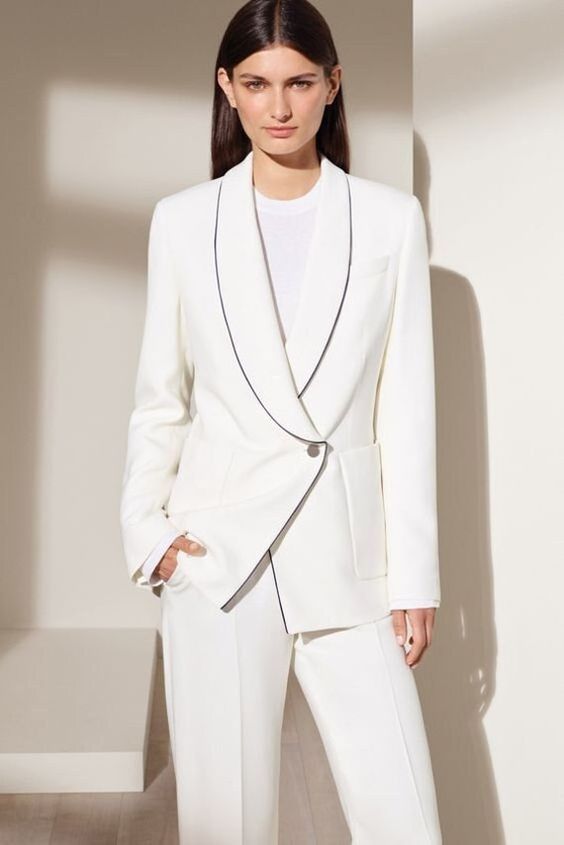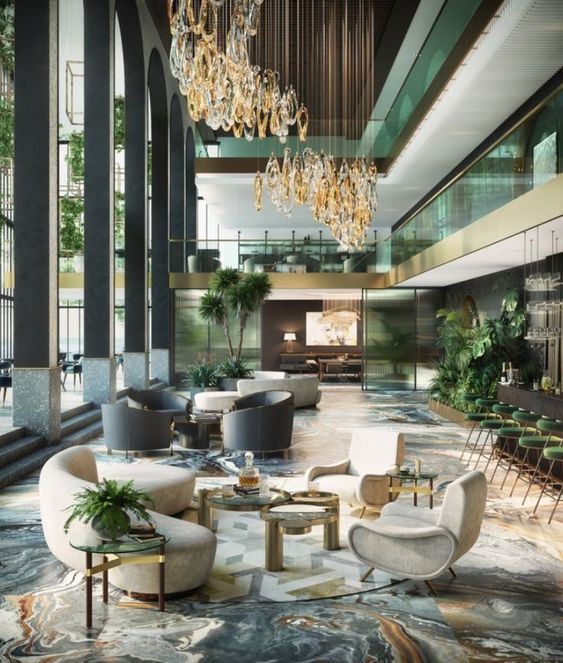Customization Options for Discerning Clients

In the dynamic world of fashion, discerning clients seek more than just off-the-rack garments; they crave a personalized touch that reflects their unique style. Customization has become the hallmark of sartorial elegance, providing individuals with the power to tailor clothing to their specific preferences. This shift towards personalized fashion is a testament to the growing demand for garments that not only fit impeccably but also resonate with one’s personality.
The essence of customization lies in the ability to choose and modify various elements of a garment, from selecting fabrics and colors to deciding on specific design details. Discerning clients, characterized by their refined taste and individualistic approach to fashion, appreciate the opportunity to curate a wardrobe that goes beyond the mass-produced. This evolution in consumer behavior has propelled designers and brands to embrace a more inclusive and client-centric approach, offering a spectrum of options that cater to diverse styles.
Tailoring, a traditional craft, has found new relevance in this era of customization. It goes beyond altering sizes; it encapsulates the art of translating personal preferences into wearable art. As discerning clients become more conscious of their fashion choices, the industry responds by providing a plethora of options, ensuring that each piece tells a unique story. From made-to-measure suits to bespoke accessories, customization has redefined the fashion landscape, empowering clients to take an active role in the creation of their clothing and accessories.
Understanding Discerning Clients’ Needs
In the realm of fashion, discerning clients stand out as individuals with a heightened sense of style and a keen eye for detail. Their needs extend beyond the conventional, seeking garments and accessories that align seamlessly with their unique preferences. The understanding of discerning clients’ needs is pivotal for designers and brands aiming to create a meaningful connection with this sophisticated segment of the market.
Discerning clients, often characterized by a refined taste cultivated through experiences and exposure to diverse fashion influences, require more than just off-the-shelf offerings. Their needs revolve around the desire for exclusivity, quality craftsmanship, and a personalized touch that sets their wardrobe apart. In essence, discerning clients seek a harmonious blend of aesthetic appeal, functionality, and a reflection of their individual identity.
Designers catering to discerning clients must navigate the delicate balance between staying on trend and offering timeless pieces. A profound understanding of their preferences, lifestyle, and aspirations is essential to craft garments that resonate on a personal level. This client-centric approach extends beyond mere transactions, fostering a relationship built on trust and satisfaction.
Whether it’s the choice of fabrics, attention to detail in tailoring, or the incorporation of unique design elements, meeting the needs of discerning clients requires a commitment to excellence. The fashion industry’s ability to comprehend and address these needs ensures that discerning clients are not just customers; they are patrons of an art form, seeking an elevated and personalized fashion experience.
Tailoring Products to Individual Preferences

In the dynamic realm of fashion, tailoring products to individual preferences has emerged as a pivotal strategy, fostering a personalized and immersive experience for clients. The essence of tailoring lies in the intricate art of crafting garments that not only complement the client’s physique but also resonate with their unique style sensibilities.
Fashion, as an ever-evolving industry, thrives on the seamless integration of client preferences into the creative process. Designers are now actively engaging with clients, not merely as consumers but as collaborators, deciphering their fashion inclinations through a dialogue that sparks innovation. Tailoring, with its hands-on approach, transforms fashion from a mass-produced commodity into a bespoke masterpiece.
The process involves an acute understanding of individual tastes, allowing for the incorporation of specific details that resonate with the client’s personality. This tailoring approach extends beyond just measurements; it delves into the nuances of color palettes, fabric textures, and style preferences, ensuring a garment that transcends the boundaries of mere clothing to become an extension of the client’s identity.
Tailoring, therefore, becomes a transitive bridge connecting the fashion industry with the desires of the clientele. Designers actively seek feedback, fostering a symbiotic relationship where client preferences shape the evolution of fashion trends. This client-centric tailoring not only elevates the overall shopping experience but also contributes to the sustainability of the fashion industry by discouraging fast fashion and promoting thoughtful, enduring pieces. As the fashion landscape continues to evolve, tailoring products to individual preferences stands as a testament to the industry’s adaptability, offering a personalized journey through the ever-changing tapestry of style.
Personalized Services: A Key to Client Satisfaction
In the fast-paced world of fashion, personalized services have emerged as the linchpin for client satisfaction, redefining the conventional retail landscape. The paradigm shift from one-size-fits-all to tailored experiences is evident in the bespoke approach adopted by fashion industry players. This shift recognizes that client satisfaction goes beyond the mere transaction of goods; it hinges on curating an individualized journey.
Tailoring, both metaphorically and literally, becomes the thread weaving together personalized services in the fabric of client contentment. Active engagement with clients is pivotal, as designers and retailers actively seek to comprehend and cater to individual tastes. This client-centric approach involves not only the customization of garments but extends to the entire shopping experience, creating an immersive and memorable encounter.
Transitive words such as “understand,” “collaborate,” and “cater” become the verbs propelling the personalized fashion service narrative. The process involves designers actively collaborating with clients, understanding their preferences, and tailoring not just the physical garments but the entire shopping journey to their liking.
The key to client satisfaction in the contemporary fashion landscape lies in the mastery of this art of tailoring – not just in the literal sense of creating custom garments but in the broader sense of crafting an experience that resonates with each client. As the industry recognizes that satisfaction is not merely transactional but experiential, personalized services emerge as the cornerstone, ensuring that each client feels seen, understood, and truly valued in the intricate tapestry of fashion.
Innovative Solutions for Customization
In the ever-evolving landscape of fashion, the quest for innovative solutions has become a cornerstone for achieving unparalleled customization, ensuring that the client is not merely a recipient but an active participant in the creation of their unique style narrative. The fashion industry, driven by an active pursuit of inventive methodologies, is transforming the customization landscape, offering clients a spectrum of options beyond the conventional.
Customization, as an active process, is being redefined through innovative solutions that go beyond traditional tailoring. The integration of advanced technologies, such as artificial intelligence and machine learning, facilitates a deeper understanding of individual client preferences. These technologies actively analyze data to predict trends and recommend personalized fashion choices, creating a bespoke experience that aligns seamlessly with the client’s taste.
Transitive words like “implement,” “integrate,” and “tailor” underscore the active nature of these innovative solutions. Designers actively implement cutting-edge tools to streamline the customization process, integrating them seamlessly into the client’s fashion journey. From customizable digital interfaces to sustainable material choices, the fashion industry is leveraging innovative solutions to offer clients a diverse array of customization options.
This shift towards innovative solutions not only enhances the efficiency of customization but also enriches the overall client experience. Whether it’s through virtual design studios, interactive apps, or sustainable fabric alternatives, fashion is actively tailoring solutions to empower clients in shaping their distinctive style, fostering a connection that transcends the transactional and transforms fashion into a collaborative and personalized art form.
The Role of Technology in Tailored Experiences
In the ever-evolving landscape of fashion, technology plays a pivotal role in enhancing tailored experiences for clients. The active integration of cutting-edge technologies transforms the traditional paradigm of tailoring, ushering in an era where customization is not just an option but a seamless and dynamic process.
Tailoring, as a transitive action, becomes intertwined with technology, ensuring that each client’s journey is not only personalized but also technologically advanced. The fashion industry actively engages with innovative tools and platforms, utilizing them to understand and cater to the diverse preferences of clients. These technologies become active facilitators, enhancing the tailoring process by providing designers with insights into client preferences, sizing nuances, and even predicting future fashion trends.
The client experience is elevated through technologies that actively involve them in the creation of their garments. Virtual fitting rooms, augmented reality, and 3D modeling allow clients to actively participate in the tailoring process, making informed choices and visualizing the final product before it’s even created.
Fashion, through the lens of technology, transcends its traditional limitations. The fusion of these two realms ensures that tailoring becomes an interactive and dynamic experience, where the client is not just a passive recipient but an active collaborator in the creation of their personalized fashion journey. The use of technology in tailoring experiences not only streamlines processes but also establishes a deeper connection between the fashion industry and its clients, ushering in a new era of bespoke innovation.
Crafting Unique Experiences: Beyond Standard Offerings

Fashion, as a dynamic industry, is increasingly recognizing the significance of crafting unique experiences that go beyond standard offerings. The active pursuit of individualized encounters has become a transformative strategy, ensuring that the client is not just a consumer but an integral participant in the fashion narrative.
Designers and brands are actively engaging in the transitive process of tailoring experiences to the unique preferences of each client. This involves a departure from the one-size-fits-all approach, where the focus shifts from mass production to a bespoke journey that reflects the individuality of the wearer. The fashion landscape is evolving as the industry actively seeks to understand, anticipate, and cater to the diverse tastes and needs of its clients.
Beyond the realm of tangible products, crafting unique experiences becomes the cornerstone of client satisfaction. The active verbs of this process include “immerse,” “engage,” and “personalize,” where designers immerse clients in a world tailored to their desires, engaging them in a participatory fashion journey, and personalizing every facet of their interaction with the brand.
This approach transcends the conventional boundaries of fashion retail, transforming it into an immersive and memorable adventure. By actively involving clients in the creative process, fashion becomes more than just a commodity; it becomes a conduit for self-expression and a vehicle for fostering authentic connections. In this era where standard offerings are no longer sufficient, the fashion industry’s commitment to crafting unique experiences ensures that each client feels seen, valued, and truly a part of the unfolding fashion narrative.
Benefits of Customization: Building Lasting Client Relationships
In the realm of fashion, the adoption of customization proves to be a dynamic strategy, yielding substantial benefits in building enduring client relationships. The active integration of customized experiences cultivates a profound connection between the fashion industry and clients, transcending the transactional nature of the consumer-producer relationship.
Fashion’s embrace of customization involves actively engaging clients in the design process, fostering a collaborative journey where preferences and individuality take center stage. Through the transitive act of customization, designers and clients collaborate, ensuring that each garment becomes a unique expression of the wearer’s style.
The benefits of customization extend beyond the tangible product, creating a personalized narrative that resonates with clients on a deeper level. Active participation in the customization process instills a sense of ownership, transforming the act of acquiring fashion into a memorable and meaningful experience. In turn, this fosters a lasting bond between the client and the brand.
Customization becomes the veritable bridge that spans the gap between mass production and individuality, actively addressing the diverse needs and tastes of clients. This tailored approach not only sets the fashion industry apart but also ensures that clients feel seen, heard, and understood.
In the evolving landscape of fashion, customization emerges not only as a transitive action but as a catalyst for forging lasting client relationships. By actively involving clients in the creative process, fashion transcends being a mere commodity, becoming a conduit for self-expression and a vehicle for building connections that stand the test of time.







